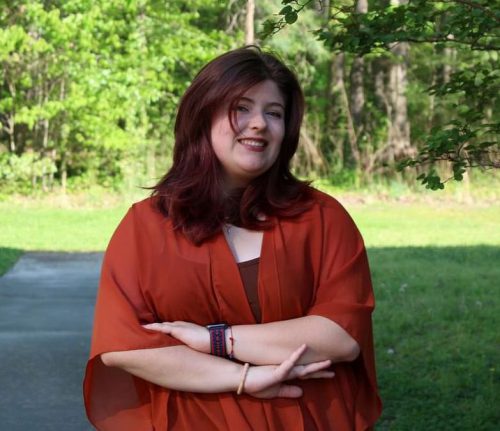First-year Madeline Diaz sees creativity as a critical issue in her career.
McKenna Howenstine|Marlin Chronicle
Picture yourself in the shoes of a teacher, eagerly awaiting the presentations your students will create for a project you assigned to them. You intentionally leave the expectations open, hoping to witness new and imaginative outcomes. However, when the presentations arrive, you’re shocked to find that they all are heavily influenced by the structure of past projects with strict outlines.
Why is this so common in our world today? We haven’t run out of new ideas, have we? The answer is simple: Students rely solely on the structured walls their educational figures have built to dictate their creative choices.
Why do many students nowadays fear being creative? It can stem from anxiety of course, but there’s something bigger that a lot of educators tend to look over considering how much we use it as a tool. Technology is swarming students’ brains, leaving them unable to think creatively.
The landscape of education has evolved significantly with the presence of technology. In the 2010s, when I was an elementary student, classrooms were still predominantly paper-based, with limited access to desktop computers. Technology usage in my elementary school days was a novelty reserved for special occasions like computer lab visits or library sessions.
Fast forward to my senior year in high school, where I had the incredible opportunity to work alongside my former fifth-grade teacher. The experience was nostalgic but mildly disappointing in only one specific way: Technology had infiltrated almost every aspect of the classroom.
Instead of flipping through dictionaries or textbooks to complete assignments, students turned to Google for definitions and answers. Rather than reading to themselves or aloud with the class, they watched YouTube videos reading the book to them. Instead of tangible assignments, everything was pretty much online. While the accessibility of information was incredible, it led to over-reliance and a lack of critical academic skills among the students not only in this class, but within the entire school.
Today’s elementary school children are growing up in a digital age and constantly overwhelmed with stimuli from various technological sources.
The unrestricted use of technology has transformed what was once a treat into an everyday necessity, raising questions about its impact on students’ ability to think imaginatively.
To keep it simple, the overuse of technology is single-handedly ruining students’ ability to be creative.
The most concerning aspect of technology’s impact on creativity is its tendency to dictate the terms of play inside the classroom. Unlike traditional means of play-based learning, many modern digital experiences come with predefined rules and objectives. Whether it’s completing levels in a video game or even following step-by-step instructions in an educational app, children are often guided along a predetermined path, leaving little room for innovation or improvisation.
The constant stimulation provided by technology overwhelms the senses and inhibits the presence of boredom. In today’s technology-based world, children rarely experience moments of downtime where their minds are free to wander and explore.
Instead, they’re bombarded with a never-ending barrage of notifications, videos and messages, leaving little opportunity for their imaginations to even begin to roam freely.
As educators, we face the challenge of navigating this digital landscape while still nurturing creativity in our students. While we cannot dictate how parents raise their children or if teachers cut technology from their classrooms completely, there are pedagogical approaches that can foster creativity. Problem-based learning, for instance, empowers students to explore complex questions independently or with group members, encouraging critical thinking and innovation that technology can assist with.
While technology offers undeniable benefits, we must be mindful of its potential to hinder creativity. It is an educator’s responsibility to strike a balance between technological integration and traditional pedagogy, ensuring that our students develop the critical academic skills necessary to thrive in an ever-changing world. By embracing innovative teaching methods and promoting creativity in the classroom, we can do our best to empower the next generation to think beyond the confines of technology and explore the boundless possibilities of their imaginations.
Madeline Diaz is a BHC first-year majoring in Elementary Education and aspires to lead future generations of students to success. She enjoys listening to music and playing the guitar and piano in her free time. Madeline can be contacted at mtdiaz@vwu.edu.
By Madeline Diaz
mtdiaz@vwu.edu

